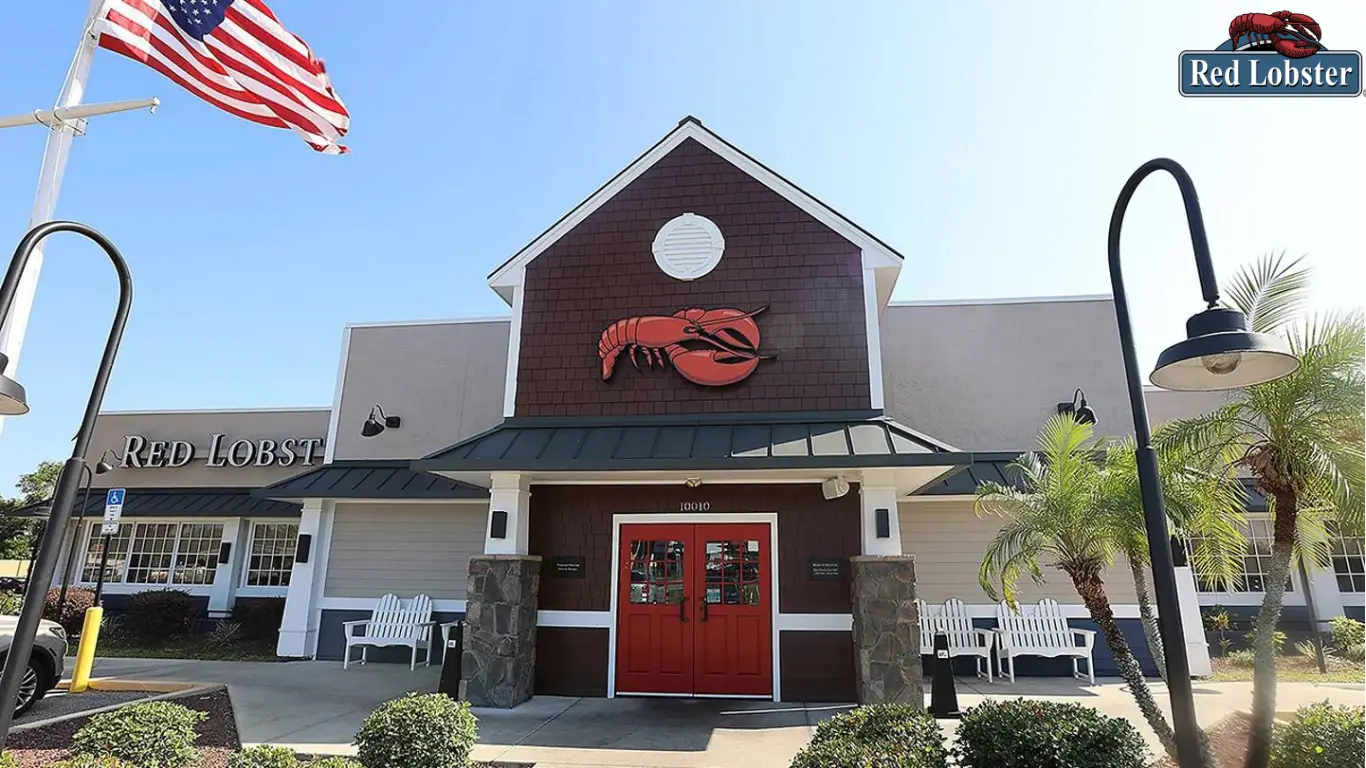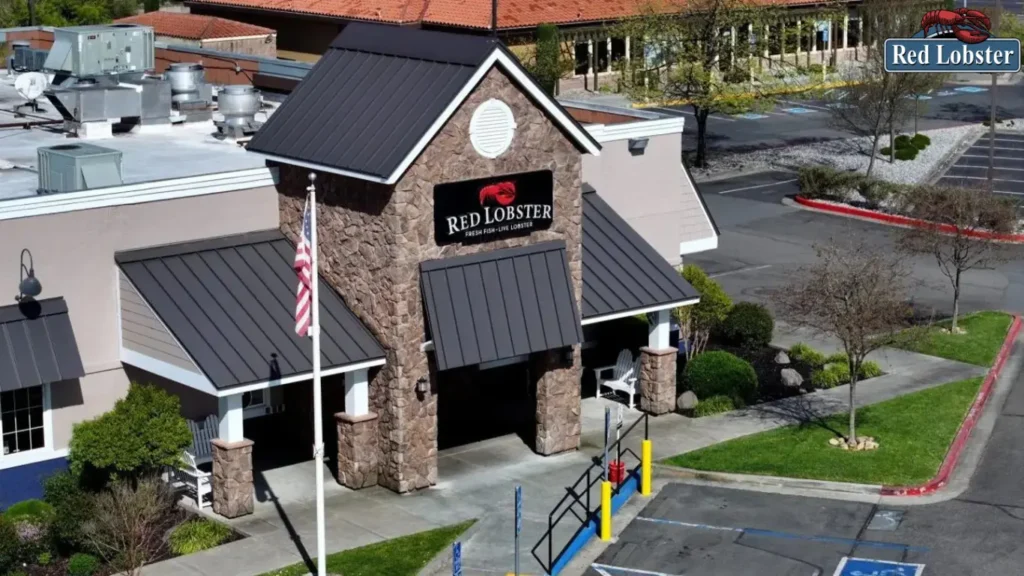News
Red Lobster Files for Bankruptcy Protection

Red Lobster famous for dishes like popcorn shrimp and endless seafood deals has filed for Chapter 11 bankruptcy protection. This means the restaurant chain is reorganizing its finances because it’s struggling with debt.
Despite its popularity Red Lobster faces significant financial challenges. It also taking steps to become stable again while continuing to serve its customers.
Red Lobster, a 56-year-old restaurant chain filed for Chapter 11 bankruptcy after closing many locations. CEO Jonathan Tibus who took over in March said the restructuring is vital for addressing financial challenges and focusing on growth.
By filing for Chapter 11, Red Lobster aims to overcome financial hurdles and strengthen its future. The company is committed to serving its customers while navigating through this process.
Despite filing for bankruptcy, Red Lobster assured that its 600 restaurants will remain open during the proceedings. The goal is to simplify operations, shut down some locations, and seek a potential buyer.
In its bankruptcy filing, Red Lobster initiated a “stalking horse” agreement. It also indicating its intention to sell the business to an entity controlled by its lenders. This strategic move aims to streamline the sale process and attract potential buyers.

Through these actions Red Lobster is taking steps to ensure the continuity of its operations while addressing financial challenges. The company remains committed to serving customers and exploring opportunities for future growth and stability.
Court documents reveal that Red Lobster operates 551 restaurants in the United States. Along with 27 in Canada and 27 franchised locations across Mexico, Japan, Ecuador, and Thailand. The company employs approximately 36,000 workers in the U.S. and Canada combined.
Aaron Allen, founder of the restaurant consulting firm Aaron Allen & Associates. It also commented on Monday that Red Lobster’s bankruptcy marks the culmination of two decades of challenges. The chain has faced mounting competition from quicker and more affordable dining options such as Chipotle and Panera.
Red Lobster’s bankruptcy filing reflects its struggle to adapt to changing consumer preferences and increasing competition in the restaurant industry. Despite these challenges the company remains committed to serving its customers and exploring avenues for future growth and success.
According to official documents Red Lobster operates 551 restaurants in the United States. Along with 27 in Canada and 27 franchised locations spread across Mexico, Japan, Ecuador, and Thailand. Across its operations in the U.S. and Canada the company provides employment to around 36,000 individuals.
Aaron Allen, the founder of the restaurant consulting firm Aaron Allen & Associates, shared insights on Monday. It also suggesting that Red Lobster’s bankruptcy filing represents the culmination of challenges spanning two decades. The restaurant chain has grappled with intensified competition from faster more cost-effective dining alternatives like Chipotle and Panera.
Red Lobster’s decision to file for bankruptcy reflects its struggle to keep pace. It also evolving consumer preferences and the increasingly competitive landscape of the restaurant industry. Despite these obstacles, the company remains dedicated to its customers and is actively exploring strategies for future growth and prosperity.
Aaron Allen highlighted that Red Lobster experienced a period of relative success in the mid-2000s when it shifted its image to a more upscale restaurant. During this time it increased prices and renovated its stores. However, despite these efforts, the chain still faced challenges due to rising lease and labor costs, as well as changing consumer preferences.
Describing the situation as a slow moving train wreck. Allen emphasized that Red Lobster has been grappling with difficulties for the past two decades.
Court documents filed by the Orlando, Florida based Red Lobster revealed. That its annual guest counts dropped by 30% from 2019, and the chain incurred a loss of $76 million in 2023.
Founded by Bill Darden, Red Lobster was established with the aim of making seafood dining more accessible and affordable for families. Despite its current challenges, the company remains rooted in its founding principles of providing quality seafood dining experiences.
Bill Darden started his restaurant journey in 1938 with The Green Frog in Georgia, where he refused to segregate patrons by race. In 1968, he opened the first Red Lobster, maintaining his inclusive approach to seating.
He sold Red Lobster to General Mills in 1970 but remained involved in the industry. General Mills later formed Darden Restaurants, which includes Olive Garden. Darden Restaurants became independent from General Mills in 1995, carrying on Darden’s legacy of inclusivity and quality dining.
Red Lobster gained a devoted fanbase for its popular dishes like lobster linguini. Its also famous Cheddar Bay biscuits, which even earned praise from comedian Tina Fey.
Bill Darden started his restaurant journey in 1938 with The Green Frog in Georgia, defying segregation laws by welcoming all patrons. In 1968, he continued this inclusive approach with the first Red Lobster near Orlando.
After selling Red Lobster to General Mills in 1970, Darden remained active in the restaurant industry. General Mills later formed Darden Restaurants, which includes Olive Garden. In 1995, Darden Restaurants became independent from General Mills, continuing Darden’s legacy of quality dining and inclusivity.
Red Lobster faced challenges in staying competitive and attracting younger diners. In 2014, Darden Restaurants sold Red Lobster to a private equity firm as part of efforts to revitalize the brand. Thai Union Group, a major seafood supplier globally, initially invested in Red Lobster in 2016 and increased its ownership stake in 2020.
However, despite ownership changes and investment, Red Lobster encountered setbacks. In the fall of a recent year, the restaurant suffered significant losses due to its “Ultimate Endless Shrimp” promotion which offered an all you can eat shrimp deal for $20. This promotion failed to generate the expected revenue and resulted in financial losses for Red Lobster.
Ludovic Garnier, the chief financial officer of Thai Union Group, explained during an earnings call with investors that the decision to offer the “Ultimate Endless Shrimp” promotion at a low price was aimed at boosting restaurant traffic. While the promotion did indeed attract more guests to Red Lobster a larger number than anticipated opted for the $20 deal.
Garnier admitted that although the promotion succeeded in increasing restaurant traffic, the high number of guests choosing the $20 deal resulted in lower profits. He remarked, “we don’t earn a lot of money at $20.” Consequently, for the first nine months of 2023, Thai Union Group reported a $19 million loss from its investment in Red Lobster.
The comments made by Garnier shed light on the challenges Red Lobster faced with its promotional strategy, highlighting the delicate balance between attracting customers and maintaining profitability. Despite efforts to increase foot traffic, the promotion ultimately led to financial losses for Red Lobster and its investors.
Thai Union Group announced in January its intention to divest its minority investment in Red Lobster. CEO Thiraphong Chansiri cited the COVID-19 pandemic, industry challenges, and rising operating costs as reasons for this decision, which had negatively impacted the dining chain’s financial performance.
In response to recent closures, restaurant liquidator TAGeX Brands revealed plans to auction off equipment from over 50 Red Lobster locations across more than 20 states. This move signifies a strategic response to manage costs and streamline operations amidst ongoing industry pressures.
Industry expert Allen predicts that Red Lobster’s restaurant presence could shrink by one-third to one-half during bankruptcy. He notes that potential buyers are more interested in the chain’s real estate than in revitalizing its operations.
Red Lobster’s court filing reveals over 100,000 creditors and assets and liabilities estimated between $1 billion and $10 billion, indicating significant financial restructuring ahead.
Thai Union Group’s decision to exit its minority investment in Red Lobster is due to the pandemic’s impact, industry challenges, and rising operating costs, reflecting broader struggles in the restaurant sector.
Allen’s insights and Red Lobster’s financial situation highlight the substantial challenges and changes facing the iconic seafood chain.
-

 Soccer6 months ago
Soccer6 months agoDutch Fans in Blackface to Imitate Ruud Gullit, One Agrees to Stop
-

 Soccer6 months ago
Soccer6 months agoEx Glamour Model Says Party with England Team Before Euros
-

 News8 months ago
News8 months agoDubai Flood, Rain Turns Desert to Aquarium🌧️🐠
-

 Soccer6 months ago
Soccer6 months agoArgentina vs Peru 2-0 Highlights & All Goals Copa America 2024
-

 Entertainment7 months ago
Entertainment7 months agoThe Try Guys’ Journey From Four to Two
-

 NBA6 months ago
NBA6 months agoCelebrate with the Boston Celtics: Parade and Traffic Updates
-

 Soccer6 months ago
Soccer6 months agoUEFA EURO 2024: Essential Guide and Key Information
-

 Soccer6 months ago
Soccer6 months agoVinicius Jr Scores Two Goals in Brazil’s Win Vs Paraguay in Copa America 2024














Pingback: Elvis's Iconic Graceland Not for Sale, Riley Keough Claims Fraud - Sports Groovy